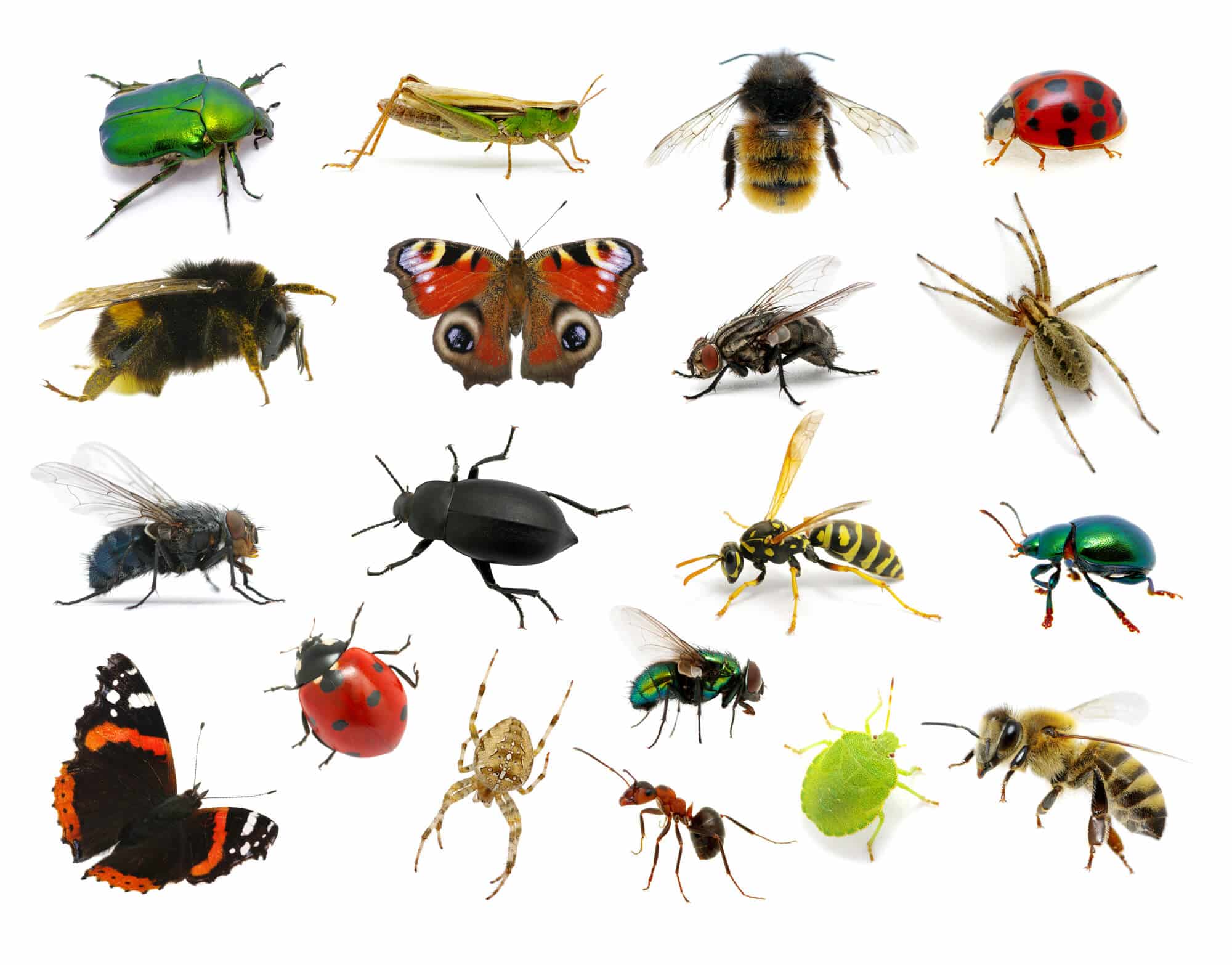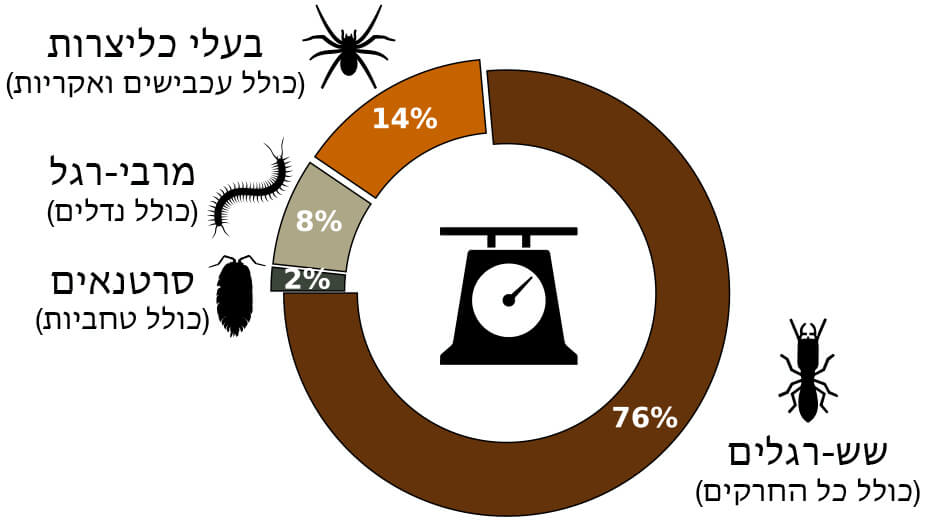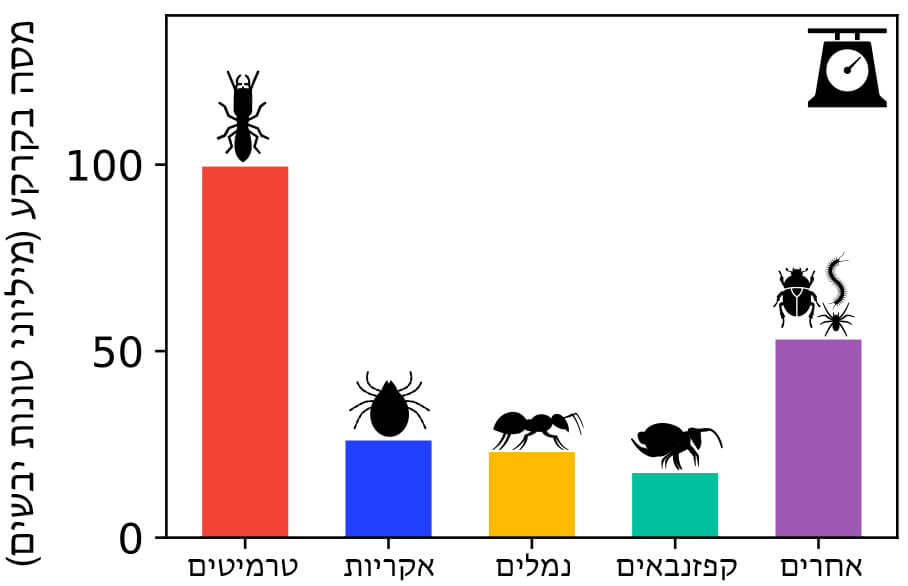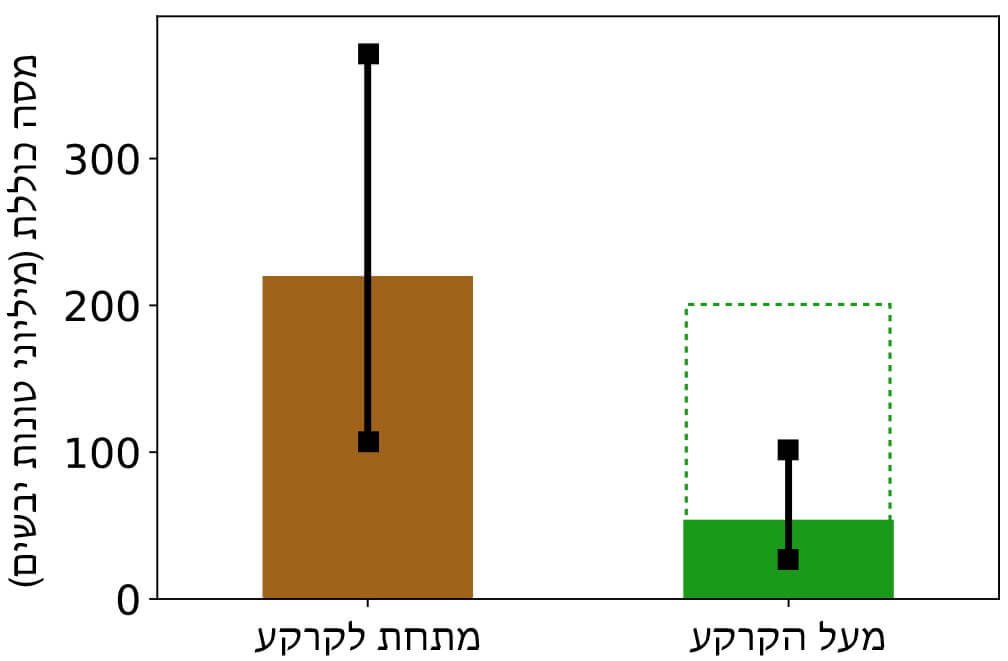In a first calculation of its kind, the weight of all the insects, spiders and their terrestrial relatives in the world was found

They swarm around us in nature and in the field, on the street and in the house, in the pipes under the floors - and even in our food and on our bodies. Arthropods, an array of more than a million species including all insects, are everywhere we turn. Their presence often disturbs us, but their absence would be unbearable: the arthropods pollinate our crops; ecosystem designers; Agricultural land is cultivated and sustains a huge variety of predators, from groundhogs to foxes, which feed on them directly and indirectly.
Despite their crucial importance to the environment and humanity - and despite data indicating a significant decrease in their numbers in areas subject to human influence - we have very partial information even on basic facts such as how many individuals the arthropods count and what their total weight is.

Weizmann Institute of Science scientists have recently taken a significant step towards finding answers to these questions. In a new study, published today in the scientific journal Science Advances, the researchers from the laboratory of Prof. Ron Milo In the department of plant and environmental sciences at the institute the total weight of terrestrial arthropods above and below ground. Their calculations show that the total mass of these arthropods reaches about 1 billion tons - a weight roughly equal to that of all humans and farm animals - cattle, sheep and pigs - together (about 400 and 600 million tons, respectively).
"Arthropods have previously been described as 'the little things that make the world go round.' They play a central role in many ecological processes. Without data on them, we will not be able to properly understand the effects of man on the planet and the possible consequences of climate change," says Dr. Yuval Rosenberg, who led the research in Prof. Milo's laboratory together with Dr. Yanon Bar-On. "To understand these effects, we must first quantify the arthropod population. This way we will get a basis for comparison, against which we can check what will happen to this campaign in the future, and how this might affect global processes."

For the purpose of this work, the scientists gathered data from thousands of observations conducted over the years at approximately 500 sample sites scattered around the world and representing distinct geographic and climatic regions - from rainforests to deserts, and in agricultural areas. The researchers examined data from both soil samples and above-ground habitats, such as on plant surfaces.
""Arthropods have previously been described as 'the little things that make the world go round'. They play a central role in many ecological processes. Without data on them, we will not be able to properly understand man's effects on the planet."
Half of the mass of those living underground belongs to social insects living in colonies: termites which make up about 40% of the total mass, and ants which make up about 10%. Most of the mass of terrestrial arthropods living above the ground is probably found in the tropical forests, and includes many arthropods that are well known to us, including butterflies, ants, beetles, spiders and grasshoppers.
"It is customary to examine the world of arthropods through the number of species, or biodiversity. This is an extremely important point of view, but sometimes it may create a false quantitative impression on the power relations among arthropods and their influence on ecological processes", says Dr. Rosenberg. "A species that has a lot of details, or a lot of overall weight, often has a more significant impact than a rare species," he adds. "Quantifying the global mass of arthropods helps to develop a more accurate and relevant perspective on a variety of ecological processes and promotes a quantitative holistic understanding of the role of arthropods in global ecology."
"For the general public, the research provides some insights," says Prof. Milo, whose laboratory has led a series of studies in recent years to map the biomass of various species. "The number corrects an impression, which may be fixed due to the widespread distribution of the arthropods, as if they were endless and inexhaustible swarms. This is not the case: their weight is measurable and they are vulnerable to the effects of man and the climate, which makes our ecosystems vulnerable as well." Thus, for example, the researchers found that in cultivated agricultural land, arthropods are much less common than in woodland or forest land located in the same climatic zone.

"The functioning of our ecosystems depends to a large extent on the state of the arthropod population. They are a formidable force that devours plants. Thousands of species of birds, reptiles and amphibians depend on them for their nutrition, and finally, they help break down and recycle all dead plants and animals and their secretions," says Dr. Rosenberg. "This has huge consequences for us as well, because a service that may seem small, such as excrement removal, not only fertilizes soils, but also prevents outbreaks of diseases and pests. Therefore, the evidence of decline in the populations of arthropods in the world requires us to carefully monitor their situation. A broad quantitative view can help us assess how ecosystems may change, and how this may affect our health, economy, agriculture and quality of life."
Amir Fromm, Mittal Ostker, Aviv Shoshani and Omer Giz from the Department of Plant and Environmental Sciences at the Weizmann Institute of Science also participated in the study.
More of the topic in Hayadan:
- Nature has stopped producing, researchers have recreated a substance extracted from algae for the treatment of a rare eye disease
- Ecological process for drug preparation
- A student from the Hebrew University developed a method for turning waste paper into a green material with industrial uses
- The dark matter puzzle
- Elephants learn sounds by imitating
